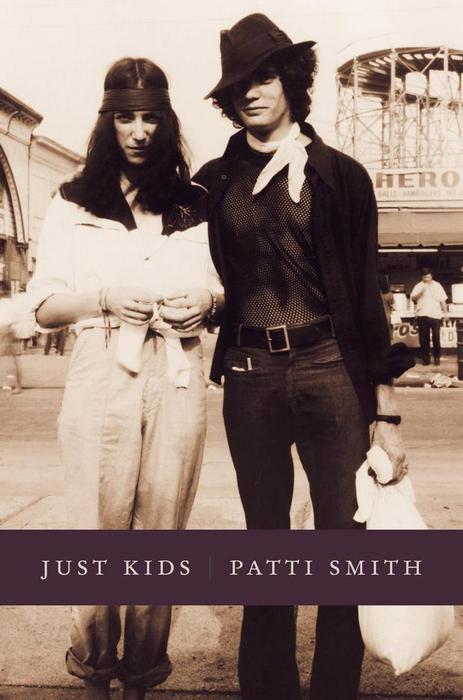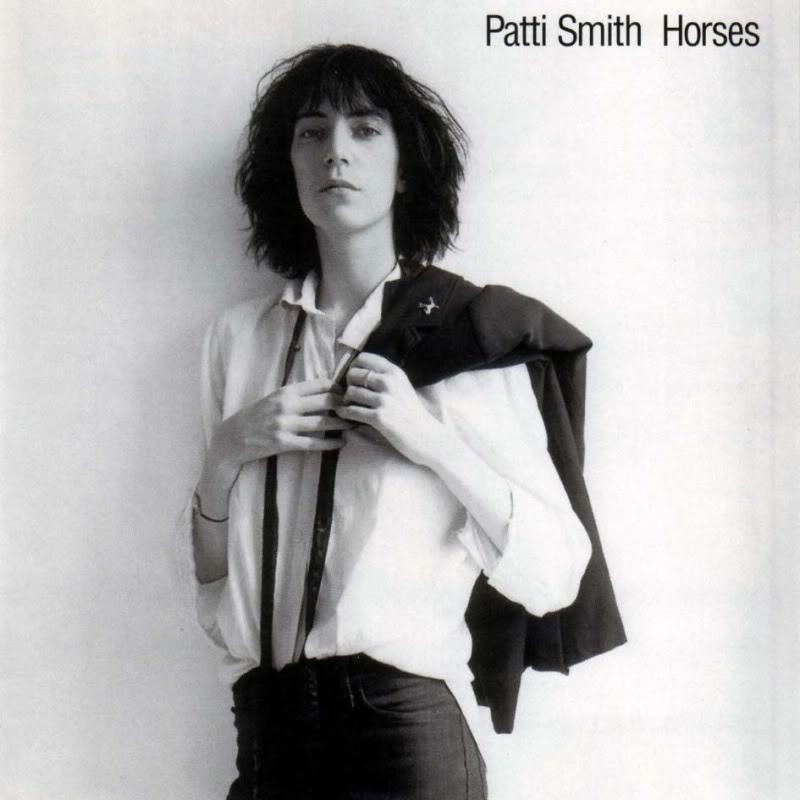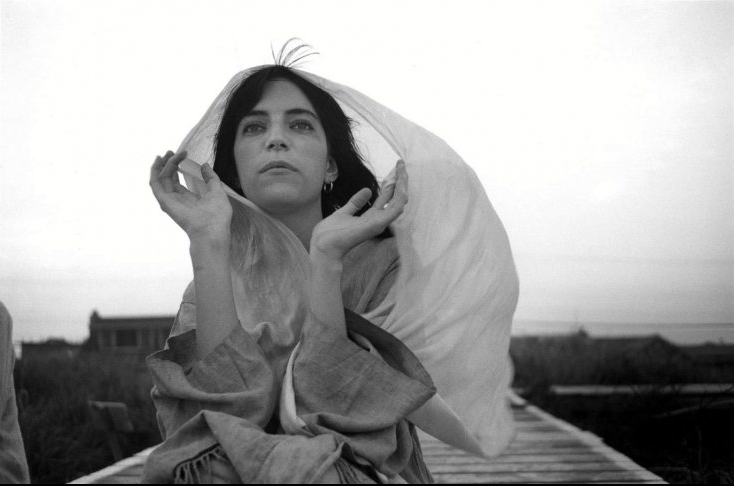For a very, very short while, I was in a band. Well, actually I was in two, but the second never made it out of the garage (or, in this case, the attic). The first one, fronted by a fabulous piano-playing bombshell friend of mine, needed a backup singer. They asked me if I played anything. Um, flute? “Okay, maybe we can use that. How about tambourine?”
“Sure.” So I became a tambourine-playing backup singing girl for about six months. This band had the bizarrest mixture of influences, from George Clinton to Blue Oyster Cult to Tori Amos to Bauhaus. (This is what happens to classically-trained rocker aspirants. Many of us become armchair musicologists. Or tour with Peter Gabriel.) I was somewhat of an innocent bystander in it all, but there was one thing I loved performing–and passionately–Patti Smith’s “Frederick”.
It was her love song to her beau Fred Sonic Smith and something of a farewell to rock–for the time being–as she went off to start a family in Detroit.
I got to thinking about her recently after browsing through this month’s Elle, a wonderful issue showcasing some surprisingly understated choices of women in music. Of course, I got stuck on the mesmerizing portrait of Feist, in a (wouldn’t you guess, it taunts me) white Stella McCartney blazer and an unmistakeable nod to Patti Smith. So angular and striking, with that punk deshabille cool.
{Photo credit: Elle}
 I love Feist. I love Patti Smith. I never would’ve put them in the same place in my head but now that I’m thinking about it–why not.
I love Feist. I love Patti Smith. I never would’ve put them in the same place in my head but now that I’m thinking about it–why not.
I’ve been reading, on and off for the last year, Patti’s memoir about her friendship with Robert Mapplethorpe, as both of them were emerging as young explorers and artists, and up to the time of his death. I’ve always thought of Patti as a performance artist above all–more than a musician or writer–but this book really changed my mind. It’s a writerly story, full of great characters and graceful emotion. And she has told the story that was in her to tell, I think.
I loved how she approached her own youth with a kind of tender mercy and not an overhwhelming sentimentality or nostalgia that I often feel in memoirs. Mapplethorpe comes out as being neither a god nor a tragic hero. There are no icons, just people. I could even go so far as to say reading it helped me forgive and love my younger self–neither idolizing or chastising it.
I’ve always loved Mapplethorpe’s photos of Patti Smith. He had a way of capturing her grace:
This photo is from a recent Time essay in which Patti writes on her life in front of cameras. Must see…Patti Smith: Photographer’s Muse.
{Edited: my original post included an image inspired by Patti Smith but not in fact her! I kept looking at it going, it *looks* like the photo I was looking for, but this woman looks remarkably like Alexa Chung. Turns out the photo was from a New York Times Magazine fashion article inspired by Ms. Smith. Most people re-posting it are mistakenly crediting it, me included. Lesson learned on the woes of fair use.}
Would you like tips and inspiration in the craft of lingerie sewing? Sign up for my weekly eletter The Lingerie Maker.




your posts are so truly interesting. i love reading them.
(and i love the peter gabriel bit!)
thanks Oona. I love Peter Gabriel, what can I say. ;
Oh yes, I loved that memoir, she writes some beautiful passages. Her and Mapplethorpe reminded me of something I discovered about the Beat poets when I visited an exhibition a couple of years ago in that I was struck by how seriously they all took themselves as artists from the get-go, before any success. Quixotically even. There’s something I just love about that grand and gung-ho idealism.